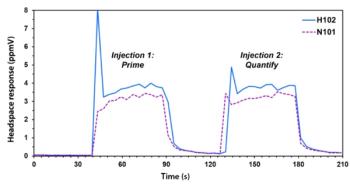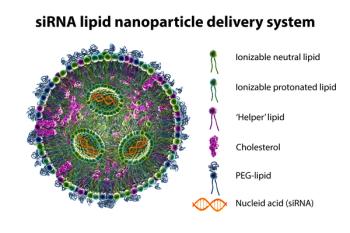
- The Column-09-09-2015
- Volume 11
- Issue 16
High-Throughput Screening of Heparin Using LC–MS
Researchers have published a new approach to heparin screening that allows the detection of adulteration within one hour. Published in the journal Analytical Chemistry, the study presents a screening strategy using hydrogen peroxide digestion followed by fast reversed-phase ion pairing liquid chromatography (reversed-phase IP–LC) coupled with tandem mass spectrometry (MS–MS) to detect contamination of heparin samples.
Researchers have published a new approach to heparin screening that allows the detection of adulteration within one hour. Published in the journal Analytical Chemistry, the study presents a screening strategy using hydrogen peroxide digestion followed by fast reversed-phase ion pairing liquid chromatography (reversed-phase IP–LC) coupled with tandem mass spectrometry (MS–MS) to detect contamination of heparin samples.1
Heparin is a complex carbohydrate that is commonly used as a blood thinner in drug formulation and as a coating on medical devices. Between 2007–2008, contamination of heparin with oversulphated chondroitin sulphates (OSCs) led to 94 deaths and 574 adverse reactions in the USA alone, highlighting a need for accurate and sensitive analytical methods to screen heparin.1 Corresponding author Peter Nemes from George Washington University (Washington D.C., USA) told The Column: “My goal is to develop new analytical technologies and methodologies that advance tests to higher throughput, specificity, and sensitivity so that a larger number of products can be tested to help preserve and advance human health. Encouraged by the performance of pyrolysis mass spectrometry,2 a technology that we also recently developed along this mission, my colleagues and I wanted to further enhance the specificity of detecting a potential contaminant.”
The study authors developed a sample preparation method using chemical treatment using hydrogen peroxide combined with heating to break down 50 μg samples of heparin, including oversulphated chondroitin sulphates (OSCs), into smaller fragments. The resulting oligomers were then separated using reversed-phase IP–LC and analyzed using MS. The method was then applied to samples collected by the FDA during the heparin contamination incident in 2007–2008 to show that it could differentiate between safe and contaminated samples. Nemes told The Column: “In comparison to current mass spectrometry protocols that typically require several hours-to-days for sample preparation and instrumental analysis time, our approach is completed in 60 minutes - from start to finish - allowing us to quality-test a given sample in higher throughput.”
In terms of future work, Nemes told The Column: “My goal is to continue advancing analytical measurements to higher sensitivity, specificity, and compatibility to volume/mass-limited samples so that even trace-level compounds can be measured in extremely small amounts of samples.” - B.D.
References
- Hong Li et al., Analytical Chemistry87, 8424−8432 (2015).
- P. Nemes et al., Analytical Chemistry 85, 7405–7412 (2013).
Articles in this issue
over 10 years ago
Vol 11 No 16 The Column September 09, 2015 Europe and Asia PDFover 10 years ago
Vol 11 No 16 The Column September 09, 2015 North American PDFover 10 years ago
Untargeted Metabolomics for Marine Pollution Analysis Using GC–MSover 10 years ago
Measuring Melamine ExposureNewsletter
Join the global community of analytical scientists who trust LCGC for insights on the latest techniques, trends, and expert solutions in chromatography.





